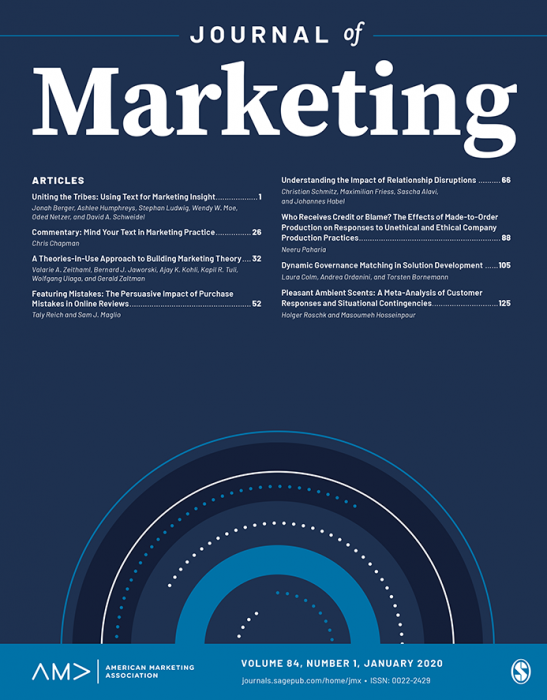EXPRESS: Automated versus Human Agents: A Meta-Analysis of Customer Responses to Robots, Chatbots, and Algorithms and Their Contingencies
IF 10.4
1区 管理学
Q1 BUSINESS
引用次数: 0
Abstract
This meta-analysis examines when three types of automated agents (AAs)—robots, chatbots, and algorithms—are equivalent to human agents (HAs) in marketing roles. Analyzing 943 effect sizes from 327 studies provides novel insights. First, customers may be skeptical of AAs; however, they value their performance and eventually choose or buy from them as if they were interacting with HAs. Second, each of the three AA types has a unique set of contingencies that affect its human equivalence; previously identified contingencies do not generalize and can even have opposing effects across AA types. This study also identifies novel contingencies, such as the multifaceted concept of artificial intelligence required to fulfill a task. Third, some contingencies make AAs more humanlike, while others make their machine characteristics salient. These findings enrich the concept of automated social presence (ASP), suggesting that AAs are hybrid beings with a social presence (i.e., the feeling of interacting with a humanlike entity) and an automated presence (i.e., the feeling of interacting with a machine entity). The authors provide recommendations on when AAs can replace HAs in marketing roles to release capacity and alleviate labor shortages. They also suggest a future research agenda.自动化与人工代理:客户对机器人、聊天机器人、算法及其偶然性反应的元分析
本荟萃分析考察了三种类型的自动代理(AAs)——机器人、聊天机器人和算法——在营销角色中何时等同于人类代理(HAs)。分析来自327项研究的943个效应量提供了新的见解。首先,客户可能会对AAs持怀疑态度;然而,他们看重它们的性能,并最终选择或购买它们,就好像他们在与HAs互动一样。其次,三种AA类型中的每一种都有一组影响其人类对等性的独特偶然事件;之前确定的偶然性不能泛化,甚至可能在AA类型中产生相反的影响。这项研究还发现了新的偶然性,比如完成一项任务所需的人工智能的多方面概念。第三,一些偶然事件使人工智能更像人类,而另一些偶然事件则使它们的机器特征更加突出。这些发现丰富了自动化社会存在(ASP)的概念,表明人工智能是社会存在(即与类人实体互动的感觉)和自动存在(即与机器实体互动的感觉)的混合体。作者就AAs何时可以取代HAs的市场角色提供了建议,以释放产能并缓解劳动力短缺。他们还提出了未来的研究议程。
本文章由计算机程序翻译,如有差异,请以英文原文为准。
求助全文
约1分钟内获得全文
求助全文
来源期刊

Journal of Marketing
BUSINESS-
CiteScore
24.10
自引率
5.40%
发文量
49
期刊介绍:
Founded in 1936,the Journal of Marketing (JM) serves as a premier outlet for substantive research in marketing. JM is dedicated to developing and disseminating knowledge about real-world marketing questions, catering to scholars, educators, managers, policy makers, consumers, and other global societal stakeholders. Over the years,JM has played a crucial role in shaping the content and boundaries of the marketing discipline.
 求助内容:
求助内容: 应助结果提醒方式:
应助结果提醒方式:


